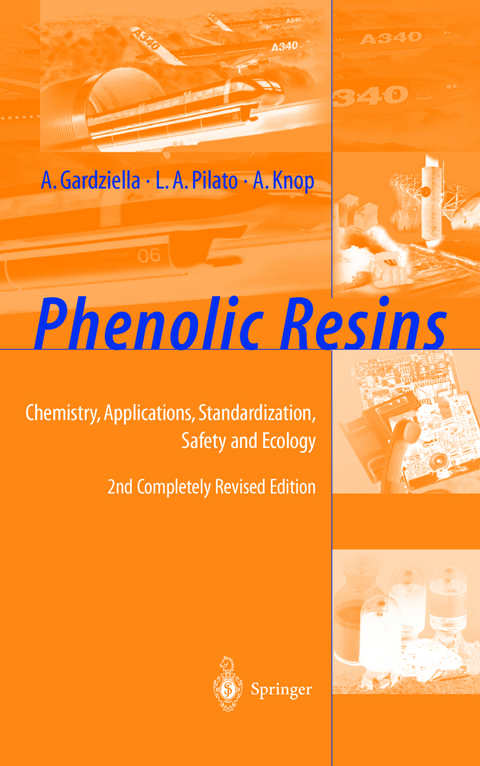Phenolic Resins
Springer Berlin (Verlag)
978-3-540-65517-6 (ISBN)
A Chemistry/Production.- 1 Raw Materials.- 2 Phenolic Resins: Chemistry, Reactions, Mechanism.- 3 Production of Phenolic Resins.- Chapter4 Structure (Methods of Analysis).- B Applications of Phenolic Resins.- 5 Thermosets: Overview, Definitions, and Comparisons.- 6 Economic Significance of Phenolic Resins, Survey of Applications, and Six Bonding Functions.- 7 Chemical, Physical and Application Technology Parameters of Phenolic Resins.- 8 Industrial Safety and Ecological Questions (Raw Materials, Recycling, Environment).- 9 Conclusion: Guidelines for Future Developments of Phenolic Resins and Related Technologies.
| Erscheint lt. Verlag | 15.10.1999 |
|---|---|
| Zusatzinfo | XXV, 566 p. |
| Verlagsort | Berlin |
| Sprache | englisch |
| Maße | 156 x 234 mm |
| Gewicht | 950 g |
| Themenwelt | Naturwissenschaften ► Chemie ► Organische Chemie |
| Naturwissenschaften ► Chemie ► Technische Chemie | |
| Naturwissenschaften ► Physik / Astronomie ► Thermodynamik | |
| Technik | |
| Schlagworte | Compound • Kunststoffe • Novolak • Phenolharze • Plastics • Polymer • Polymers • Resol • Safety • Thermoplast • Thermoset |
| ISBN-10 | 3-540-65517-4 / 3540655174 |
| ISBN-13 | 978-3-540-65517-6 / 9783540655176 |
| Zustand | Neuware |
| Informationen gemäß Produktsicherheitsverordnung (GPSR) | |
| Haben Sie eine Frage zum Produkt? |
aus dem Bereich




